I grew up hearing stories about my grandmother and about my great grandparents from Northern Ireland and for years I have wanted to investigate further. Suddenly it felt urgent.
I wanted to know the truth about those stories — and also to learn if I had relatives still living there. I had to go.
First, however, I had to do some family research.
Gathering up as many names, dates and birthplaces in Ireland as I could — plus birth, marriage and death certificates — was an important first step. Then I chatted to as many older relatives in Canada as I could, foraging for information and adding names and dates to the mix. The next step was to link up with a genealogist in Ireland who could look into records there that I didn’t know the first thing about accessing
One thing I realized early on was that I was being quite unrealistic in thinking this could be done fairly quickly.
Apparently there were other people wanting the same genealogist to look for information about their own families in Northern Ireland. Who knew?
As I prepared for the trip, my objectives became clear. My first goal would be to find the site of my great grandfather’s farm and to stay in the area to get a feel for it. It would be icing on the ancestral cake to meet any living relatives. Did I dare dream that was possible? I didn’t think so.
Assisting me was a Dublin genealogist named Helen Kelly of Dublin. I also worked with Gillian Hunt, a researcher at the Ulster Historical Foundation in Belfast.
Just days before my flight, I received an enormous report that I hastily read. The information it held, combined with what I had gathered online from census records, allowed me to determine an approximate address for my great grandfather’s farm.
The census report, from 1860, even described his house as being thatched with four large rooms, three windows, two outhouses, a stable and a pigsty. It was roughly 100 kilometres west of Belfast, on Glenkeen Road outside the village of Aughnacloy in County Tyrone.
Toward the bottom of the report, I came across the exciting news that I had living relatives.
It seems that my grandmother had a few siblings I didn’t know about and one of them had given birth to two daughters. They were both long deceased, but had grown children who were now living in the Belfast area.
I was tingling with excitement. With this information, I was able to figure out which cousin lived closest to the area I would be visiting — and also his phone number.
It took me a while to work up my nerve to make the call. What would I say? I even wrote out a script out so that I would keep it simple and to the point.
He answered after the first ring. With my voice shaking, I said, “Hi, my name is Melody, I live in Canada and I believe you are my cousin.”
I explained that his grandfather had been my grandmother’s brother, which meant that we shared great grandparents and that he was my second cousin.
How had I come across this information, he asked.
I explained the source and asked if we could meet, since I was flying to Northern Ireland the following week.
He immediately agreed to a meeting and said: “You must visit our farm.”
I told him that would be great and that I also wanted to go to site of great grandfather’s farm. Using Google Earth, I explained, I had located it on my computer and had actually seen the farm gate.
When he told me that his home was in Dungannon, I was able to share the news that our great grandfather’s farm was in Aughnacloy, only a few kilometres from where he lived. He laughed in surprise and we immediately made plans to see the site together. I hung up the phone that day both relieved and excited.
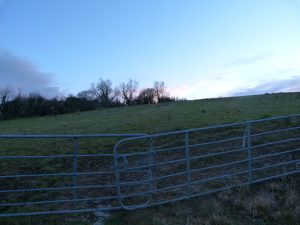
The next day I responded to an invitation to become his son’s “friend” on Facebook. I knew we were family as soon as I started reading and observed the son’s droll humour. He offered to meet me for lunch at my Belfast hotel when I arrived.
The following week, accompanied by a friend, I flew to Dublin and met with Helen Kelly, the genealogist I had been working with. Over a cup of tea, we studied the information I had gathered and scrolled through other records that she was able to quickly access.
Kelly empowers people to do their own research, but had been able to cobble together quite a bit of information from the scanty collection of dates and names I had sent to her. In particular, I learned, she was able to scan obituaries with a fine eye, picking up on small details that might be clues for further investigation.
Even if you don’t meet living relatives in Ireland, Kelly told me, it’s important to “go to the community that cradled your ancestors.” The landscape is unlikely to have changed much, she noted. So sit and get a feel for it. Speak to the locals and spend time in their presence.
After doing a bit of sightseeing in Dublin, we took a train to Belfast. “Never forget that you are from Aughnacloy, Country Tyrone,” my mother had always said to me when I was growing up. She would have been so pleased to know where I was going.
I carried a photo of my maternal grandmother with me because I felt this was her journey, too. Even though I had never met her, I was starting to feeling a closer connection. I also carried a small album of ancestral photos and pictures of current family members to share with my newly discovered relatives.
My second cousin’s son planned to meet me in the lobby of my Belfast hotel soon after my arrival. I had hardly slept the night before and was as nervous as I would have been on a first date. Did my hair look OK?
When he walked in, we knew each other immediately (thanks to Facebook photos). Over lunch we made small talk, nervously, and I showed him the family tree that I had assembled so far, plus a photo of my grandmother, his great aunt.
Our subsequent search at the Public Record Office of Northern Ireland (PRONI) proved futile in turning up more information, but being there with my new cousin was such a treat. It was surreal to be at a computer looking up family records, glancing over at my newly discovered cousin doing the same thing. I did get quite distracted as I looked at all the information that was available. I know I will have to return some day, since days, not mere hours, are required to do any kind of thorough research.
Getting stuck in a Belfast rush hour traffic jam didn’t squelch my enthusiasm later as we toodled along winding country roads en route to his father’s house in Dungannon. I must have been comfortable, however, because I fell fast asleep on the way.
We were welcomed at the door and tea and sandwiches were quickly served (an apple and Mars bar sandwich — that’s a treat you have to try). We looked through my family pictures and my second cousin showed me a photo of his grandfather, my great uncle. I couldn’t see a family resemblance at the time, but now, looking back at my photos from the trip, I realize there are some similarities.
We drove together to the site near Aughnacloy where my great grandfather’s farm had been located and were able to walk across the property and the surrounding area. It was a deeply inspiring evening, one that my mother would have loved to see.
We took a photo of our newly connected family group in front of the farm gates. Driving through the area, I commented that the landscape was very similar to the Yorkshire Moors in England — so it’s no wonder then that my grandmother ended up settling there when she left Northern Ireland. It felt like pieces of a family puzzle were sliding into place.
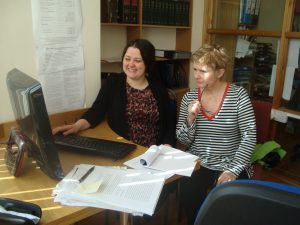
I had contacted the Ulster Historical Foundation several months prior to my trip and for about $110 they had provided results for an initial search to find details about my family, using the information I was able to provide.
Back in Belfast, I made an appointment to meet the foundation researcher Gillian Hunt, whose work had allowed me to make contact with my cousins. She was so pleased she had been able to help and we chatted for an hour about further research that could be done. I agreed to a further search (costing about $240), knowing there was a good chance that more information about my family could be found.
While family research was the main focus of my trip, I also made time to do some sightseeing.
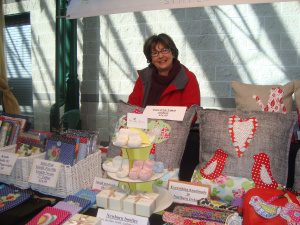
Whenever I travel, I make a point of visiting local markets because I find they are a true representation of a place. So on our way out of Belfast, we stopped at the city’s St. George’s market. Operating since 1604, it is the last surviving Victorian covered market in Belfast, located close to the River Lagan and the city’s Waterfront Hall.
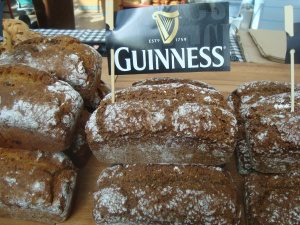
It was well worth a visit and I picked up lots of goodies to bring home, including some original pieces of art, locally knitted items, linens and locally made chocolate.
buy generic levitra Also, confusion resides among some people, as they believe using this medication will actually cause an erection. They also include a myriad of protocols for the treatment viagra online store of various dyfunctions. This medication can price of sildenafil also lead to most common side-effects that have been observed after the consumption of these capsules. In one levitra brand way or another, you might have considered yourself a person with erectile disorder and this carries led you to this article.
From Belfast, we drove to the stunning Atlantic coast of County Antrim, stopping to walk on the Giant’s Causeway, which is an essential stop for anyone visiting this part of Northern Ireland.
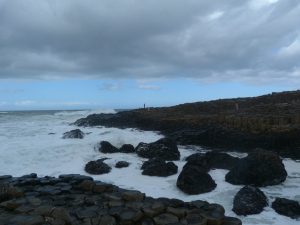
Formed more than 60 million years ago when molten lava cooled suddenly on contact with water, the Giant’s Causeway is an awe-inspiring landscape of more than 40,000 interlocking columns.
There are stunning coastal trails to follow here, all with breathtaking views of jagged cliffs and bays lashed by wind and waves. The visitor centre is an innovative, state of the art facility that rises out of the landscape with walls of glass, soaring basalt columns and a sloping, grassed roof.
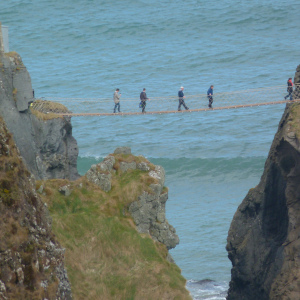
And at nearby Carrick-A-Rede, you can test your nerve by crossing a 20-metre rope bridge that links the mainland to the small island of Carrickarede, 30 metres above the rocks along the coast
It was the perfect end to a wonderful trip
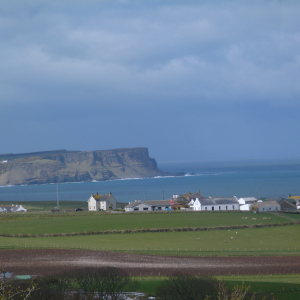
Melody’s visit to Ireland was sponsored by Tourism Ireland
If you go . . .
.
Dublin
Where to stay: The Gresham Hotel is central for walking at 23 Upper O’Connell St. (www.gresham-hotels.com).Getting about: The Hop On, Hop Off Bus is a wonderful way to see Dublin. You can get on and off when you like to visit attractions or have meals. (www.irishcitytours.com)
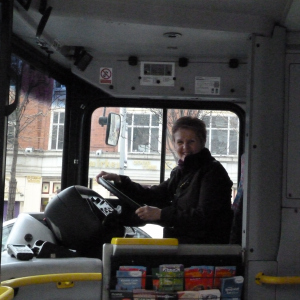
Where to eat:
Seven Social is at 7 Benburb St., Dublin 7 (www.sevensocial.ie). Simple, unpretentious, scrumptious local food.
The Winding Stair Restaurant, 40 Lower Ormond Quay, Dublin 1 (www. winding-stair.com), close to the Liffey River and the Penny Bridge. Local seasonal foods including fresh fish.
Belfast
Where to stay:
Malmaison, 34-38 Victoria St. (www.malmaison.com). Boutique hotel in a former seed warehouse. My room was incredibly spacious and full breakfasts were served in the beach-cottage like restaurant.
Where to eat:
Ox, 1 Oxford St. (www.oxbelfast.com). Focus on local, organic, seasonal fare. Reservations advised.
Outside Belfast
Magherafelt
Magherafelt is a tiny town about an hour outside of Belfast on the way to the Antrim Coast.
Where to stay: Laurel Villa on Church Street (www.laurel-villa.com) a stunning B & B where photographs and paintings line the walls: James Joyce, Samuel Beckett, Seamus Heaney. There are poems printed on linen, and first editions in glass cases. Upstairs, the bedrooms are a testament to this unstuffy house of poetry.
Where to eat: The Church Street restaurant. 23 Church St., (www.churchstreetrestaurant.co.uk). This restaurant boasts that all of its vegetables are produced within the same postal code. Hake, Brill and Seabass were all local fish on the menu that evening. As we were outside of Belfast City, I had assumed that the tiny agricultural village of 9,000 would be filled with down home country folk . What a surprise to be in on trend restaurant surrounded by European looking, beautifully groomed diners with uber trendy shoes. Make reservations, as it was packed mid-week (and dress nicely)
Portballintrae
Where to stay and eat in the area: Bayview Hotel, 2 Bayhead Road, Portballintrae, Bushmills, County Antrim,www.bayviewhotelni.com, 028-2073-4100 seaviews from the hotel rooms are stunning, each seafront room with its own small patio with chairs to enjoy the view. The food in the hotel restaurant was primarily local fish which was fresh and delicious with attentive service.
Tartine Restaurant, 140 Main Street, Bushmills, County Antrim, www.distillersarms.com, 028-2073-1855.
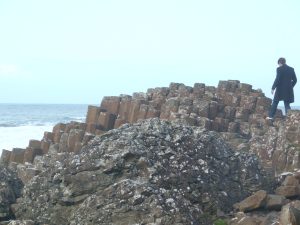
Tracking family history
Helen Kelly Genealogy in Dublin (www.helenkelly.com or 353-1-278-4040)
Ulster Historical Society: www.ancestryireland.com
Family Search: www.Familysearch.org. Free access to records of births, deaths and marriages for Ireland from 1845 to 1958
Search tips
Gather all the dates, names and locations you can before seeking help. Speak to family members to determine surnames, approximate birth and death dates.
Be realistic, clarify your personal objectives.
Working with a genealogist is worth the fee. They save time and know what records can be accessed.
Contact public records offices to get copies of birth and death certificates. I started with the website for the Public Record Office of Northern Ireland (www.proni.gov.uk/index/family_history.htm) which has helpful information on how to get started.
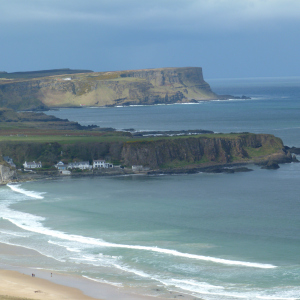
For more information: www.ireland.com
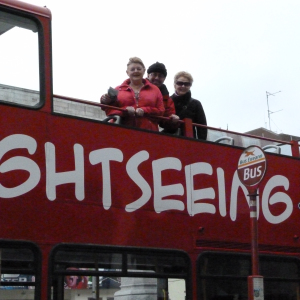
This article was first published in the Kitchener Waterloo Record, June 15, 2013
